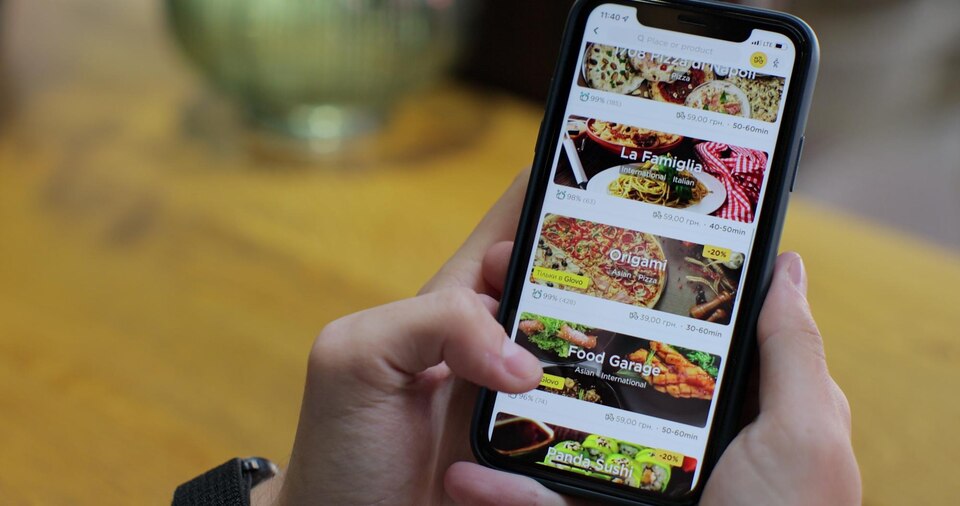Introduction
In recent years, the popularity of food delivery services has surged,driven by the convenience it offers to consumers. Consequently, creating a food delivery app has become a profitable venture for entrepreneurs and businesses. In this blog, we will explore various ways to develop a food delivery app that caters to differing levels of technical expertise and budget considerations.
1. Outsourcing Development to a Software Company
One option for creating a food delivery app is to outsource development to a reputable software company. This is suitable for entrepreneurs or businesses with limited technical expertise or resources to manage the process. You can create food app by partnering with an experienced team, tap into their expertise and ensure a polished and feature-rich app. Outsourcing the development of the food app can streamline the process, allowing you to focus on the core aspects of your business while the software experts handle the intricacies of creating a seamless and user-friendly platform for food delivery.
Advantages:
– Expertise: Software companies have experienced developers who specialize in app development, ensuring a high-quality product.
– Time-saving: Outsourcing allows you to focus on other aspects of your business while the development team handles the technical work.
– Maintenance and Support: Most software companies provide ongoing maintenance and support, ensuring that your app remains functional and up-to-date.
Disadvantages:
– Cost: Outsourcing development can be expensive, particularly if you’re working with a reputable company.
– Limited Control: You might have limited control over the development process and the timeline.
– Communication Challenges: Effective communication is crucial, and miscommunication can lead to delays or misunderstandings.
2. Hiring Freelancers
For a more budget-conscious approach, hiring freelancers can be a viable option. Freelancers offer specialized skills and can be hired for specific tasks, making it suitable for startups or small businesses looking to control costs.
Advantages:
– Cost-Effective: Freelancers often charge lower rates than established software companies.
– Flexibility: You can hire freelancers on a project basis, giving you more control over the scope and budget.
– Niche Expertise: You can select freelancers with specific skills relevant to your app’s development.
Disadvantages:
– Quality Variability: The quality of work can vary based on the freelancer’s expertise and reliability.
– Coordination Challenges: Managing multiple freelancers can be challenging, requiring effective project management skills.
– Limited Accountability: Unlike established companies, freelancers might not offer comprehensive post-launch support.
3. Using App Builders or No-Code Platforms
For those without coding skills, using app builders or no-code platforms is an accessible way to create a basic food delivery app. These platforms provide drag-and-drop interfaces and pre-built components, allowing you to create a functional app without writing code.
Advantages:
– Ease of Use: No coding skills are required, making it suitable for beginners.
– Speedy Development: App builders can significantly expedite the development process.
– Cost-Effective: No-code platforms are often more affordable than hiring developers.
Disadvantages:
– Limited Customization: The extent of customization might be limited by the platform’s features.
– Scalability Challenges: No-code apps might face limitations as your user base grows.
– Generic Design: Your app’s design might resemble other apps built on the same platform.
4. Learning to Code and Building from Scratch
Building a food delivery app from scratch can be rewarding if you’re willing to invest time and effort into learning app development. Learning to code gives you full control over the app’s features, design, and functionality.
Advantages:
– Complete Control: You have the freedom to design and implement every aspect of the app.
– Skill Development: Learning to code is a valuable skill that can be applied to future projects.
– Cost Savings: You eliminate development costs by coding the app yourself.
Disadvantages:
– Steep Learning Curve: Learning to code requires time and dedication, especially if you’re new to programming.
– Development Time: Building from scratch can take longer compared to using pre-built solutions.
– Potential Bugs: Inexperience might lead to bugs and issues that need debugging.
Conclusion
Developing a food delivery app involves multiple factors, including technical expertise, budget constraints, desired customization levels, and control. Your approach should depend on your circumstances, whether you choose outsourcing, hiring freelancers, using no-code platforms, or learning to code. Each approach has its own advantages and challenges. By comprehending these options, you can make an informed decision that aligns with your goals and resources, ultimately leading to the successful development of your food delivery app.

